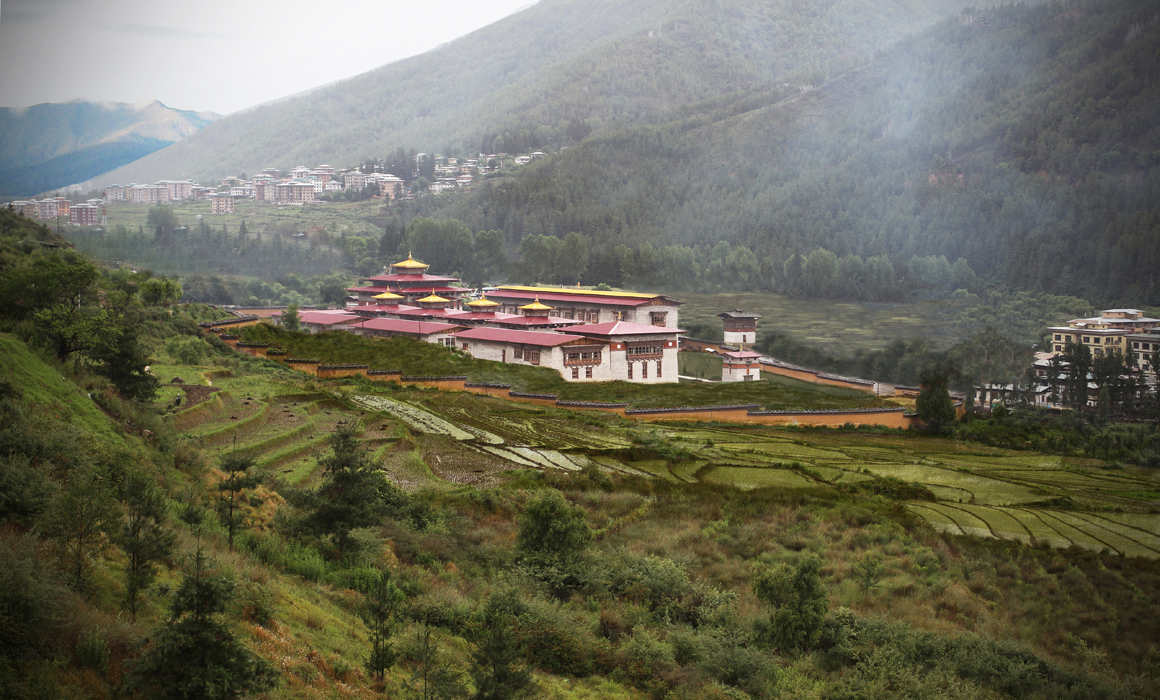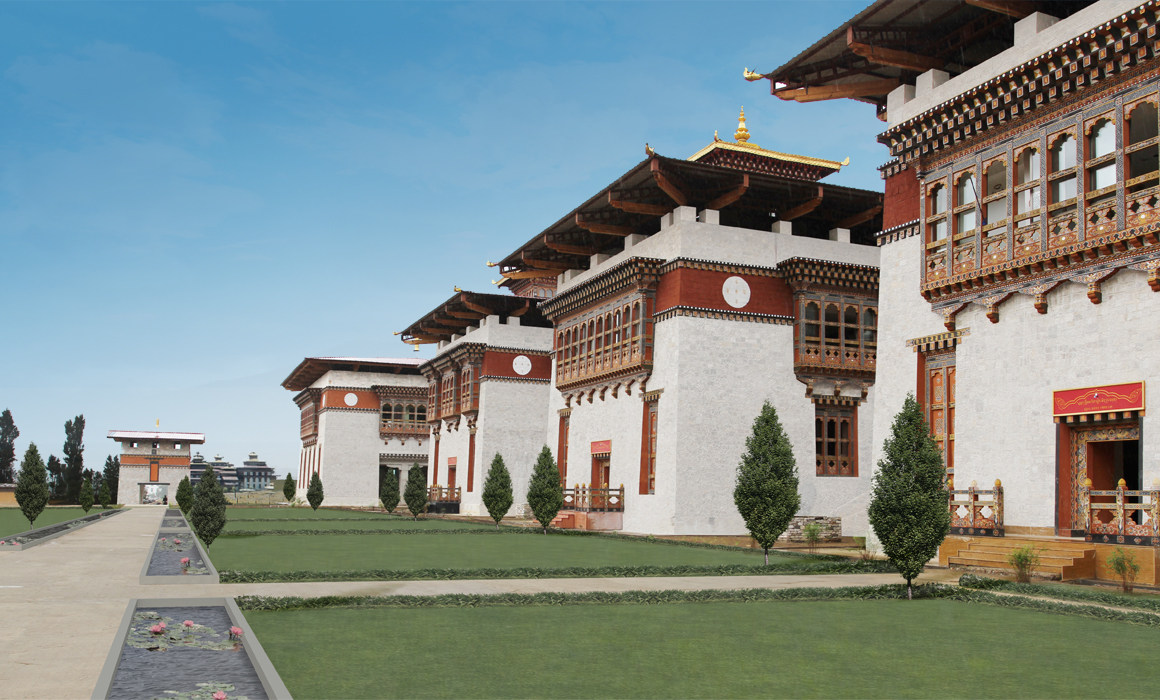
Thimphu, Bhutan 2006-2014
Text and Photographs: Christopher Charles Benninger Architects
The Supreme Court of Bhutan is one of the critical components of the Bhutan modernization project, centered on the transformation of the monarchy into a constitutional democracy. The design problem was to create an iconic structure reflecting the importance of the Constitution and the culture from which the essence of the Constitution emerged. The design conundrum was to find a new building typology within the regional, yet speaking within the architectural language of the society. This language is based in a vocabulary of iconography, symbolic colors and the employment of culturally appropriate motifs that are cultural signifiers. The campus also spatially addresses the ancient Trashichhoe Dzong where the studio had completed an important extension, in the form of the National Ceremonial Plaza. Finally, a very important part of the problem was the limitation of building resources, craftsmen and technology. Prior to this design there had been several attempts by foreign architects, whose employment of highly processed materials, requirement for technical construction equipment, and need for construction management, obviated implementation. Their alien appearances were incongruent with the visual language of the people.

Programmatically the problem was to create one full bench court and four single bench courts, supported by administration and archives, in the form of an Administrative Building. There was also to be a Judicial Library, a Registrar’s Building and Lawyers’ Chambers. Perhaps most challenging was the site selected by the architects as part their earlier urban design for the National Capitol Precinct that slopped heavily from west to east, perpendicular to the north-south axis addressing the Trashichhoe Dzong, within which lies the country’s most sacred temple, the twelfth century Utsi. The completed campus is the result of strategies addressing all of these factors: site, cultural contextual, technological and functional issues. Early strategic decisions were to use local materials that could be sourced from the immediate region. Local craftspeople were to be employed and the technologies that they are familiar with used. All of these decisions carried the implication that the Bhutanese fabric of build would be employed, as the craft culture followed patterns of dimensions, iconography norms, color and motif signifiers, and fabrication methods unique to the culture. For example, there is a vast unwritten catalogue of details, motifs, joinery, column designs, etc. that the carpenters and masons know ‘by heart,’ and carry out by instinct, and not through ‘measuring and building.’

This craft system could be catalyzed, something like a Logo set, to assemble various building typologies, within the same language of build. The second strategy was to address the urban design issues of the National Capital Precinct through a site plan that centered the structures on a Judicial Plaza, aligning the full bench Supreme Court chamber at the far north of the plaza with the Trashichhoe Dzong, and specifically the ancient Utsi, to the south. The third strategy was to organize the arrangement of functions and activities in the complex in a matter that separates the profound from the mundane. Put simply, the judges, their archives and support staff had to have their own circulation in the complex, separating them from plaintiffs and visitors. Finally, the strategy for the site addressed the slope coming down across it, perpendicular to the north-south Trashichhoe Dzong axis. This height variation was exploited to bring the judges into the site from the higher western elevation, one floor above the public entry, cutting a terrace, creating the lower plaza level. This allowed for secure circulation within the administrative area and courts, via bridges, from the west, with the public coming into the courts from the lower east side. Several heritage structures in the form of small chortens were also integrated into the site plan.






This work rejects the strategy of importing an alien, new style, while creating a modern building typology in the Himalayan context. The campus is a manifestation of regional context, culture, lifestyle, climate, topography and a design philosophy that is conscientious of, and responsible to, a living civilization’s’ traditions.









